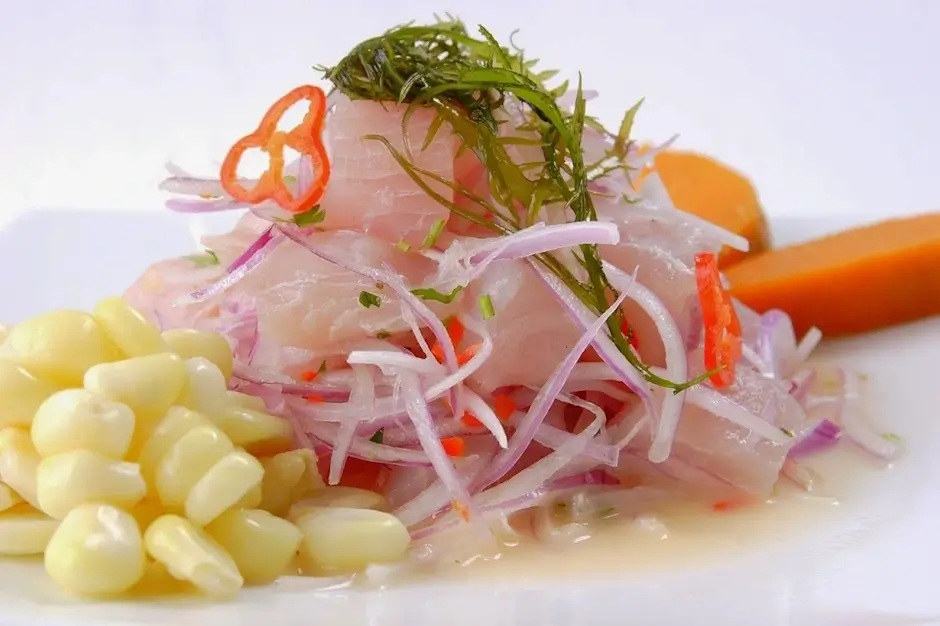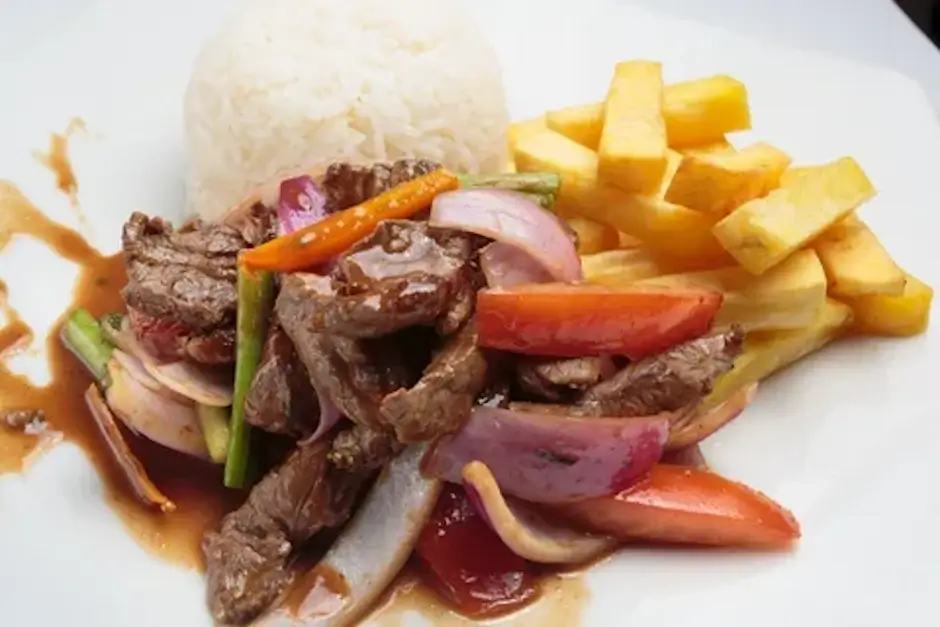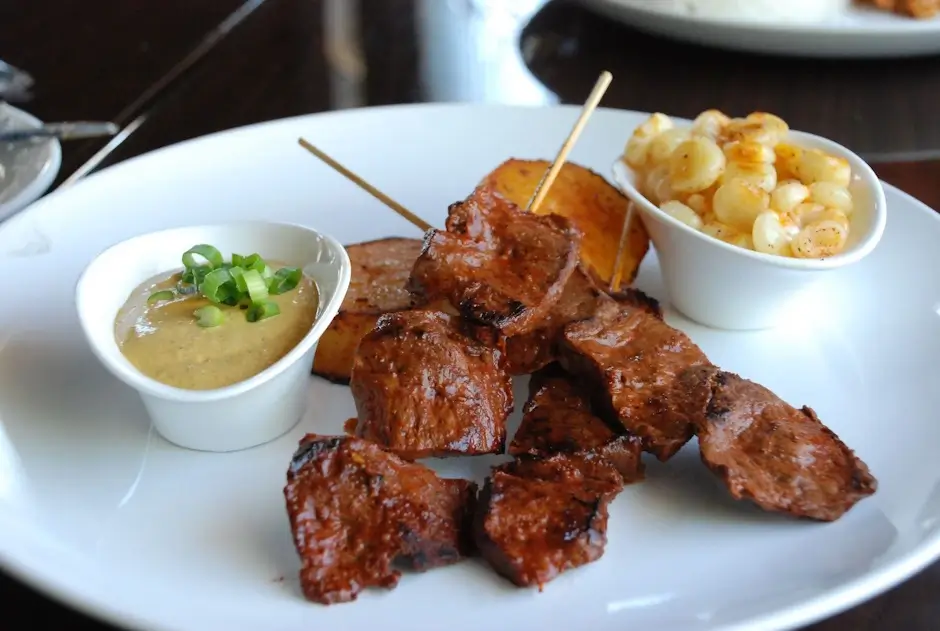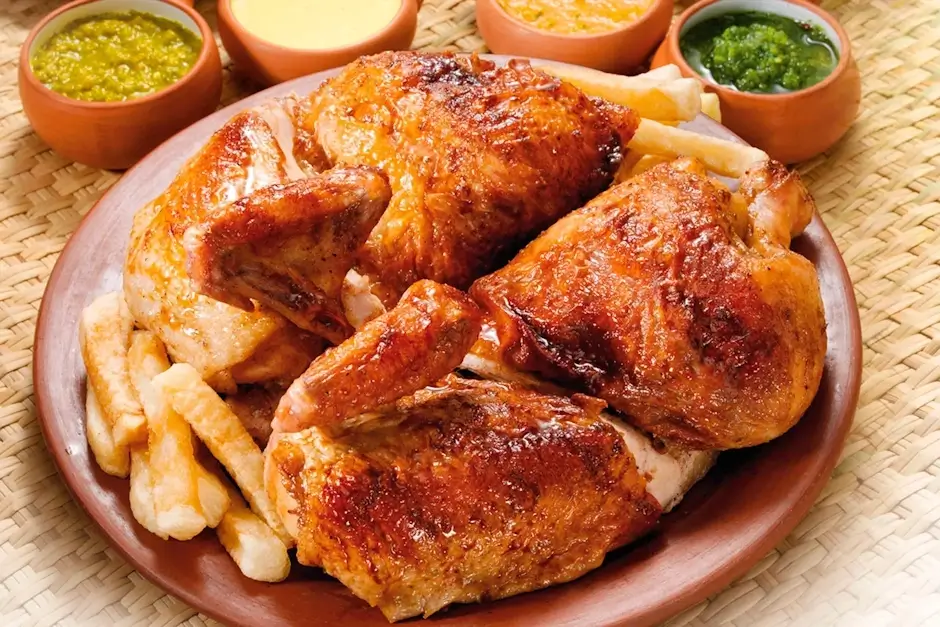Take a gastronomic tour in lima peru
Peru is an exciting journey that will introduce you to the diverse and delicious flavors of Peruvian cuisine. Lima is renowned for its culinary scene, offering a unique blend of traditional indigenous ingredients, colonial influences, and contemporary culinary innovations.
Lima, the capital of Peru, is not only the gateway to Machu Picchu or the Pacific coast—it’s also the epicenter of one of the most vibrant culinary scenes in the world. Often referred to as the gastronomic capital of Latin America, Lima offers a rich tapestry of flavors that reflect centuries of cultural fusion, innovation, and the abundance of Peru’s native ingredients. Taking a gastronomic tour in Lima is a true immersion into the soul of Peru through taste.
- Discover the Wonders of Peru: with the Tour Perú Machu Picchu Nazca 15 Days
- Discover the Best of Perú: with the Tour Perú Amazon Nazca Machu Picchu 20 Days
- Travel Package to Peru Tour in Lima, Paracas, Ballestas, Nazca Lines, Colca Canyon 22 Days
Gastronomic Tour The Starting Point – Ceviche and Coastal Cuisine

When embarking on a gastronomic tour in Lima, the journey must begin with the city’s most iconic and beloved culinary treasure: ceviche. More than just a dish, ceviche represents the spirit of Peru’s coastal heritage—fresh, bold, and full of life. Lima, blessed with the cold, nutrient-rich waters of the Pacific Ocean, is home to some of the finest seafood in the world, making it the perfect place to experience marine cuisine at its finest.
Ceviche: Peru’s National Pride
Ceviche is a celebration of simplicity and freshness. Raw fish—usually corvina or sea bass—is marinated in freshly squeezed lime juice, mixed with sliced red onions, cilantro, and spicy ají limo. In just minutes, the citrus “cooks” the fish, creating a dish that is both refreshing and flavorful. It’s often served with sweet potato, corn, cancha (toasted corn), and seaweed, which add texture and balance to every bite.
While you can find ceviche throughout the country, Lima is where the dish reaches its highest expression. From elegant seafood restaurants to humble neighborhood cevicherías, each chef adds their own touch to this national symbol.
Where to Try It
- La Mar Cebichería: A must-visit spot led by world-renowned chef Gastón Acurio. La Mar offers an upscale take on traditional ceviche with seasonal and regional variations.
- El Mercado: Known for its casual yet gourmet approach, this restaurant delivers high-quality seafood with a relaxed, urban vibe.
- Local cevicherías in districts like Surquillo, Callao, or Jesús María provide authentic, down-to-earth versions at affordable prices—ideal for experiencing ceviche like a true Limeño.
Beyond Ceviche: A World of Coastal Delights
Ceviche is just the beginning. Lima’s marine cuisine includes a variety of dishes that showcase the depth of Peruvian seafood:
- Tiradito: Similar to sashimi, this dish features thin slices of raw fish topped with spicy sauces like ají amarillo or rocoto cream, often influenced by Japanese techniques.
- Jalea: A crispy seafood platter of deep-fried fish, squid, and shellfish served with salsa criolla and yuca fries.
- Chupe de camarones: A hearty shrimp chowder with potatoes, cheese, corn, and a hint of spice—perfect for cooler days.
The Fusion Factor
What makes Lima’s seafood scene so special is its fusion of cultures. The influence of Japanese immigrants gave rise to nikkei cuisine, a sophisticated blend of Japanese precision with Peruvian ingredients. In ceviche, this fusion can be seen in subtle additions like soy sauce, sesame oil, or the use of sushi-grade cuts and plating techniques.
Why Start Your Food Tour Here?
Because ceviche and coastal cuisine are at the very heart of Lima’s identity. They represent not only the geography of the city but its cultural richness, creativity, and love for fresh, high-quality ingredients. By starting your gastronomic journey with ceviche, you’re beginning at the source—where the sea meets the soul of Peru.
Gastronomic Tour A Journey Through History via Its Flavors
Peru’s capital is more than a bustling coastal city—it’s a living museum of culinary history. Taking a gastronomic tour in Lima is like walking through time, with each dish telling the story of a different era, migration, and cultural exchange. From ancient Andean roots to modern fusion masterpieces, Lima’s flavors reflect centuries of tradition and transformation.
Ancient Roots: Andean Ingredients That Endure
Peruvian cuisine began with the agricultural genius of pre-Columbian civilizations. Ingredients such as quinoa, potatoes, maize, and ají peppers have been cultivated for thousands of years and remain staples of the modern kitchen. In Lima, you’ll find these ingredients in both traditional dishes and haute cuisine. Try a creamy oca or mashua purée in an upscale restaurant or enjoy a papas a la huancaína at a local eatery—the flavors are timeless.
The Spanish Influence: Colonial Flavors
When the Spanish arrived in the 16th century, they brought new ingredients like wheat, citrus fruits, olives, and livestock. This marked the beginning of criolla cuisine, a flavorful mix of European and native influences. Classic dishes like ají de gallina (a creamy chicken stew) or carapulcra (a dried potato stew with pork) are the result of this historic culinary fusion and are widely featured on gastronomic tours through Lima’s traditional restaurants.
African Heritage: Soulful and Bold
With colonization came the forced migration of African people, who left a profound mark on Peruvian culture and cuisine. Their creativity with humble ingredients gave rise to bold, soulful dishes like anticuchos (grilled beef heart skewers), tacu tacu (a crispy rice and bean dish), and picarones (sweet potato doughnuts). These flavors are alive and celebrated in many of Lima’s picanterías and street food stalls, especially in neighborhoods like Surquillo or Rimac.
Asian Influence: Chifa and Nikkei Cuisine
In the 19th and 20th centuries, waves of Chinese and Japanese immigrants arrived in Peru, and their culinary traditions fused beautifully with local flavors. Chifa, the Peruvian-Chinese food, became a national obsession—think arroz chaufa (fried rice) and tallarín saltado (stir-fried noodles with Peruvian seasoning). Meanwhile, Nikkei cuisine, the blend of Japanese and Peruvian techniques, gave birth to elegant dishes like tiradito, sushi with Peruvian sauces, and even ceviche with a hint of wasabi or soy.
Restaurants like Maido (ranked among the world’s best) and neighborhood chifas alike demonstrate how these cultures have shaped Peru’s modern identity.
A Living Culinary Legacy
Lima’s culinary history is not frozen in time—it’s evolving every day. Young chefs continue to honor tradition while innovating with new techniques and sustainable sourcing. A gastronomic tour in Lima connects you with this dynamic blend of past and future, offering not just food, but a deep cultural experience.
Why Take a Historical Food Tour in Lima?
Because every bite tells a story. Lima’s food isn’t just about flavor—it’s about identity, resilience, diversity, and creativity. From pre-Inca fields to colonial kitchens, from African hearths to Asian techniques, the city’s cuisine is a mirror of its complex and fascinating history.
Gastronomic Tour in Markets – The Heart of Limeño Cuisine
To truly understand the soul of Lima’s gastronomy, you must go beyond the restaurants and into the local markets. These bustling hubs of color, aroma, and tradition are the beating heart of Limeño cuisine. A gastronomic tour through Lima’s markets is more than a food experience—it’s a cultural immersion, a chance to witness where the flavors of Peru begin.
Markets as Culinary Museums
Markets in Lima are living culinary museums where you can explore the incredible biodiversity of Peru’s coast, highlands, and jungle in one place. From exotic Amazonian fruits to freshly caught seafood and ancient Andean grains, the markets offer the raw ingredients that power both traditional and modern Peruvian cuisine.
Walking through a market, you’ll see stalls piled high with:
- Over 3,000 varieties of potatoes
- Colorful chili peppers like ají amarillo and ají panca
- Fresh herbs such as huacatay and muña
- Unique fruits like lucuma, granadilla, and camu camu
- Ceviche-grade fish straight from the Pacific Ocean
Must-Visit Markets in Lima
Surquillo Market
Located near the district of Miraflores, Surquillo Market is a favorite among chefs and foodies. It’s an excellent place to sample fresh produce, Andean grains, and street snacks. Many culinary tours start here, offering guided tastings and ingredient explanations that help you better understand Peruvian recipes.
San Isidro Market
A bit more upscale and organized, the San Isidro Market features premium ingredients and gourmet products. It’s a great spot to find artisan cheeses, organic vegetables, and specialty items often used by Lima’s top chefs.
Minorista and Neighborhood Markets
For a more local, authentic feel, smaller neighborhood markets in districts like La Victoria, Rimac, or Magdalena offer a vibrant, less-touristic perspective on everyday Limeño life. They’re often more chaotic, but filled with treasures—and friendly vendors happy to share their knowledge.
Market-to-Table: Cooking Experiences
Many gastronomic tours now offer a market-to-table experience. After selecting ingredients alongside a local chef, visitors take part in a cooking class where they learn to prepare Peruvian classics like ceviche, causa limeña, or ají de gallina. This hands-on approach deepens your appreciation for the quality and variety of Peruvian products.
Why Markets Matter
In Lima, the market is more than a place to shop—it’s a community gathering point, a school of flavors, and a reflection of Peru’s cultural mix. The markets embody what makes Peruvian cuisine so exceptional: diversity, freshness, tradition, and innovation.
Experience the Roots of Peruvian Cuisine
If you want to truly connect with Lima’s culinary identity, start in the markets. It’s where the country’s rich ecosystems, ancestral knowledge, and everyday life come together—creating the vibrant food scene the world has come to admire.
- Embark on a Journey of Ancient Traditions: The Inti Raymi Tour in Cusco 4 Days
- Discover the Wonders of Peru with the Tour Perú Machu Picchu 5 Days
- Discover Peru with the City Tour Sacred Valley Machu Picchu 4 Days
- Explore the Wonders of Cusco with City Tour and Machu Picchu3 Days
Gastronomic Tour in Lima: Sweet Traditions and Specialty Coffee
A gastronomic tour in Lima wouldn’t be complete without exploring the city’s beloved desserts and its rising specialty coffee scene. After indulging in ceviche, anticuchos, and fusion cuisine, it’s time to treat your sweet tooth and sip a cup of world-class Peruvian coffee. Lima’s traditional confections and innovative cafés offer a perfect blend of heritage and modern indulgence.
Traditional Desserts: A Legacy of Love and Flavor
Lima’s dessert culture is a reflection of its colonial history and multicultural roots. Many sweets were born in convent kitchens or passed down through generations, blending Spanish techniques with Peruvian ingredients.
Here are a few must-try traditional treats:
- Suspiro a la Limeña: A creamy caramel-like dessert topped with port wine meringue. Rich, elegant, and iconic, its name translates to “the sigh of the lady from Lima” for a reason.
- Mazamorra Morada: A comforting purple corn pudding spiced with cinnamon, cloves, and filled with dried fruits. Often served alongside arroz con leche (rice pudding) as a classic duo.
- Picarones: Deep-fried doughnuts made from sweet potato and pumpkin, drizzled with chancaca syrup (a rich molasses-like sauce). Best enjoyed hot from a street vendor or in a traditional picantería.
- Turrón de Doña Pepa: A chewy, anise-flavored nougat covered in colorful sprinkles, traditionally eaten during religious festivities.
Lima’s Emerging Coffee Culture
While Peru has long been a major coffee producer, especially in regions like Cajamarca, Cusco, and Villa Rica, it’s only in recent years that Lima has embraced specialty coffee culture with full force. Today, the city is home to a growing number of third-wave cafés that highlight origin, process, and flavor in every cup.
Some key places to visit:
- Puku Puku Café: A pioneer in promoting Peruvian beans, offering espresso and pour-over options in a cozy setting.
- Tostaduría Bisetti: Located in Barranco, this café and roastery is known for its expertly roasted beans and deep knowledge of Peruvian coffee regions.
- Neira Café Lab: A favorite among coffee connoisseurs, featuring a rotating selection of beans and a minimalist, modern aesthetic.
- Colonia & Co.: Combining a brunch-friendly menu with great coffee and stylish design, perfect for those who want flavor and atmosphere.
Pairing Coffee and Sweets
One of the joys of Lima’s food scene is pairing its rich desserts with carefully brewed coffee. A mazamorra morada with a cinnamon-spiced latte, or a suspiro a la limeña paired with a fruity pour-over, creates a flavor harmony that’s unforgettable.
Why Include Sweets and Coffee in Your Food Tour?
Because desserts and coffee tell their own story—one of cultural fusion, artisanal revival, and everyday pleasure. Exploring these flavors connects you not just to Peru’s past, but also to its exciting culinary future.
Gastronomic Tour Barranco and Miraflores – Neighborhoods to Savor
No gastronomic journey through Lima is complete without a visit to its most flavorful and charming districts: Barranco and Miraflores. These neighboring areas are not only cultural and artistic hubs—they are also epicenters of culinary creativity, offering everything from traditional Peruvian dishes to world-class fine dining, fusion cuisine, and innovative street food.
Miraflores: Culinary Elegance by the Sea
Perched on cliffs overlooking the Pacific Ocean, Miraflores is a modern, cosmopolitan district known for its upscale restaurants, stylish cafés, and gourmet markets. It’s a perfect place to begin your food adventure.
Highlights in Miraflores:
- Fine Dining: Home to some of the world’s top restaurants like Maido (Nikkei fusion) and Rafael, Miraflores is where Peruvian gastronomy meets innovation.
- Classic Flavors: Try ceviche in local favorites like Punto Azul or enjoy a traditional ají de gallina in cozy criollo restaurants.
- International Influence: This district reflects Peru’s global connections with options for Japanese, Italian, French, and Middle Eastern cuisine—often with a Peruvian twist.
- Desserts and Cafés: Don’t miss pastelerías (pastry shops) and specialty coffee houses such as Neira Café Lab or Kaldi’s Coffee, perfect for an afternoon treat.
Barranco: Bohemian Bites and Artistic Flair
If Miraflores is sleek and modern, Barranco is bohemian and soulful. Known for its colonial architecture, colorful murals, and romantic atmosphere, Barranco is a paradise for food lovers seeking creativity and authenticity.
What to Savor in Barranco:
- Picanterías and Tapas Bars: Taste anticuchos, causa limeña, and pulpo al olivo in lively bars and traditional eateries.
- Fusion Cuisine: Restaurants like Isolina bring rustic Peruvian recipes to life in generous portions, while others like Mérito offer contemporary twists using Andean and Amazonian ingredients.
- Trendy Cafés and Artisanal Ice Cream: From Tostaduría Bisetti for premium coffee to Blu for fresh, locally inspired gelato, the neighborhood is full of sweet surprises.
- Nightlife and Cocktails: After dinner, explore Barranco’s bar scene and sip on a craft pisco sour while enjoying live music or ocean views.
Culinary Experiences in Both Districts
Many gastronomic tours in Lima include walking routes through Miraflores and Barranco, allowing travelers to enjoy:
- Market visits and street food tastings
- Cooking classes with local chefs
- Pisco tastings and cocktail workshops
- Food and art walking tours, combining flavor and culture
Why Explore Barranco and Miraflores?
Because these two districts offer the perfect balance of tradition and trend, of sea breeze and soul, of bold flavors and refined techniques. Whether you’re looking for authentic Peruvian comfort food or avant-garde creations, Barranco and Miraflores are the places to taste it all.
Why Take a Gastronomic Tour in Lima?
Lima, the vibrant capital of Peru, is more than just a stopover on the way to Machu Picchu—it’s a world-class culinary destination. Recognized as the gastronomic capital of Latin America, Lima offers a rich tapestry of flavors that reflect the country’s diverse geography, deep-rooted traditions, and multicultural heritage. So, why should you take a gastronomic tour in Lima? Here are the top reasons:
Discover One of the World’s Most Celebrated Cuisines
Peruvian cuisine has taken the international spotlight in recent years, and Lima is at its center. With award-winning restaurants like Central, Maido, and Astrid y Gastón, the city has become a magnet for food lovers from all over the globe. A gastronomic tour lets you taste the very best of traditional and contemporary Peruvian cuisine in one trip.
Experience a Melting Pot of Cultures on a Plate
Peruvian food is the result of centuries of cultural fusion—Andean ingredients meet Spanish, African, Chinese (Chifa), and Japanese (Nikkei) influences. On a food tour, you’ll discover how this blend created unique dishes like:
- Ceviche: Fresh fish “cooked” in citrus juice, a symbol of coastal Peru.
- Lomo Saltado: A wok-fried beef stir-fry with Chinese roots.
- Anticuchos: Grilled skewers from Afro-Peruvian tradition.
- Tiradito: A Japanese-inspired take on raw fish with Peruvian spices.
Visit Local Markets and Learn from the Source
Markets are the soul of Peruvian gastronomy. A guided tour often includes stops at vibrant local markets like Surquillo or San Isidro, where you can explore:
- A rainbow of exotic fruits from the Amazon and Andes
- Native ingredients like quinoa, potatoes, and chili peppers
- Fresh seafood straight from the Pacific coast
Many tours even offer cooking classes, allowing you to transform your market finds into authentic dishes.
Indulge in Traditional Sweets and Artisanal Coffee
A food tour also highlights Peru’s lesser-known culinary treasures, like:
- Suspiro a la Limeña and mazamorra morada: classic desserts with colonial origins
- Picarones: Peruvian-style doughnuts made with sweet potato and pumpkin
- Specialty coffee: Lima’s booming café culture showcases beans from top regions like Cajamarca and Cusco, brewed to perfection in modern coffee houses
Taste Your Way Through Iconic Neighborhoods
Districts like Miraflores and Barranco are more than scenic—they’re full of flavors waiting to be discovered. From ocean-view fine dining to street food stands, food tours lead you through the heart of Lima’s culinary map, combining history, art, and flavor in a walking experience.
Connect with Culture Through Food
Food is one of the most powerful ways to understand a culture. On a gastronomic tour in Lima, you’ll not only eat—you’ll learn the stories, traditions, and people behind each recipe. You’ll connect with Peru’s heritage in the most delicious way possible.
Whether you’re a foodie, an adventurous traveler, or simply curious, a gastronomic tour in Lima is a must. It’s a journey through history, diversity, creativity, and passion—served on a plate. With every bite, you’ll get closer to the essence of Peru.
Because it’s a delicious way to discover the history, culture, and heart of Peru. Every dish tells a story, every ingredient has a heritage, and every flavor brings you closer to the essence of the country. Whether you’re a passionate foodie, a culinary explorer, or simply curious, Lima is ready to welcome you with open arms and a full plate.
- Eplore Peru: From Vibrant Lima to Mystical Machu Picchu and Majestic Lake Titicaca 8 Days
- Perú Travel with Tour Lima Cusco Machu Picchu Lake Titicaca 7 Days
- Explore the Wonders of Cusco with City Tour and Machu Picchu 3 Days
- Explore Peru with the Lima Cusco Machu Picchu Huayna Picchu Tour 6 Days
For more information and to book your trip, contact us on WhatsApp. Follow us on Instagram for the latest updates and travel inspiration.
CONTACT US:
We are a Travel Agency specialized in tourist packages, if you need any information, do not hesitate to write to us.
We offer tours in Peru and Bolivia.




